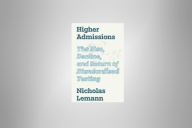You have /5 articles left.
Sign up for a free account or log in.
High schoolers who take career and technology education courses achieve the same college success as students who focus on more academic courses, and they are only slightly less likely to enroll in college in the first place, a study published Tuesday by Education Next found.
Researchers Daniel Kreisman, an assistant professor of economics at Georgia State University, and Kevin Stange, an associate professor of public policy at the University of Michigan, reviewed data from nearly 4,000 participants in the 1998-2015 National Longitudinal Survey of Youth and found that for each upper-level CTE class a student took in high school, they earned about 2 percent more annually, even if they didn't go to college, compared to people who took more academic courses without going to college, who had no such return.
“The returns when you get a job from taking upper-level academic courses are all explained by whether you went to college,” Kreisman said. “College increases your earnings, but having taken an academic course does not, necessarily. It doesn’t look like the workforce really values doing well, simply, in math, for example.”
The report, “Depth Over Breadth: The Value of Vocational Education in U.S. High Schools,” addressed the question of whether students who take CTE courses are disadvantaged because they did not invest time in more standard academic courses, and the answer is they are not, Kreisman said.
Kreisman and Stange also identified specific demographic groups that are more likely to enroll in vocational courses: male students, disadvantaged students who have a low household income or whose parents did not attend college, and students in rural America, specifically Southern states. For these students, the report suggests, it’s important to continually offer both introductory and advanced-level vocational courses.
“CTE helps the less advantaged kids,” said Anthony Carnevale, director of the Georgetown Center for Education and the Workforce. “High school is very academic now; it has almost nothing to do with the real world. For most young people, that’s an absurd situation … They don’t see any relationship between their Algebra 2 course and the real world.”
Vocational or CTE courses, which are most commonly introductions to industries like transportation, business and management, and computer technology, “facilitate better postsecondary enrollment decisions before students make potentially expensive mistakes -- an important priority amid concerns about the number of college dropouts burdened with student debt,” the report said.
However, the report “doesn’t say anything about bypassing college,” Kreisman said.
“I can’t necessarily say that someone struggling in academics would be better off going right into the labor market,” he said. “The students who choose to go into these courses end up benefiting from them, meaning if we limit the chances for students to take these courses, they won’t have that option.”
There is concern, however, that high schools are leaving vocational learning behind for a heavier academic course load, which may not work for all students. Federal funding for vocational programming has dropped 32 percent since 1985, and high school students’ average number of vocational credits dropped by 14 percent between 1990 and 2009, according to the National Center for Education Statistics.
But Kreisman said the outlook is turning positive, with more STEM courses placed into CTE curricula and CTE course work being incorporated into college-preparation classes.
“There’s demand for these hard skills and the cost of college has gone way up, so it makes sense for students who want to take these types of courses, especially in high school, because when they get [out], it becomes very, very costly,” he said.








